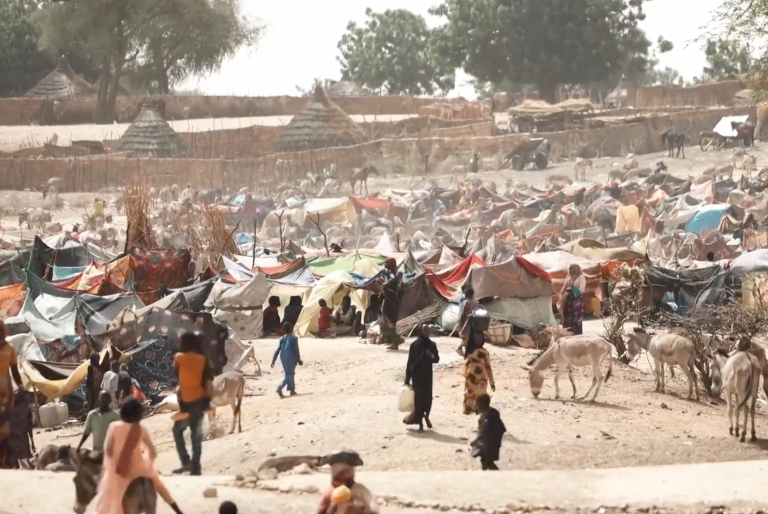Copyright Newsweek

The United States, Russia and China—the top three nuclear-armed powers—have all test-fired their intercontinental ballistic missiles, or ICBMs, over the past year as the arms race among them looms, challenging global strategic balance and stability. The most recent ICBM test, conducted by the U.S. on Wednesday with the launch of an unarmed Minuteman III missile, aimed to evaluate the weapon system's reliability, readiness and accuracy, according to the U.S. Air Force Global Strike Command. Newsweek has contacted the Russian and Chinese foreign ministries for comment via email. Why It Matters The Stockholm International Peace Research Institute estimated that the nine nuclear-armed states—the U.S., Russia, China, the United Kingdom, France, India, Pakistan, Israel and North Korea—possess a total of 12,241 nuclear warheads. About 9,614 were in military stockpiles for potential use, including 3,912 that are currently deployed. The recent nuclear tensions come after Russia tested a so-called doomsday device—the nuclear-powered, nuclear-armed Poseidon torpedo—and U.S. President Donald Trump ordered the military to immediately begin nuclear weapons tests to counter adversaries. Meanwhile, China, an emerging nuclear power, has showcased its newest ICBM force. What To Know Following the Minuteman III missile test, which the U.S. military said had been scheduled years in advance, Trump said he may be working to denuclearize with Russia and China, saying the two nations could catch up with the U.S. within four or five years. The Nuclear Information Project at the Federation of American Scientists estimated that the U.S. had about 3,700 warheads in its nuclear stockpile for delivery by aircraft and ballistic missiles, while Russia and China had 4,309 and 600, respectively. Regarding their ICBMs, the U.S., Russia and China have deployed 400, 333 and 462 missiles, respectively. Unlike its Russian and Chinese counterparts, the U.S. military operates only a single type of ICBM, the Minuteman III, which has been in service since 1970. All three nuclear powers have established their own nuclear triad, consisting of ICBMs, submarines armed with ballistic missiles and nuclear-capable aircraft, which ensure their forces can survive a first strike and retaliate, thereby deterring a nuclear attack. The U.S. Air Force routinely and periodically tested its ICBM force by launching an unarmed Minuteman III missile on February 19 and May 21, validating that its nuclear deterrent is safe, secure, reliable and effective in deterring threats and reassuring allies. Russia held a nuclear forces exercise on October 22, overseen by President Vladimir Putin. The drill included the launch of a land-based Yars ICBM, a Sineva submarine-launched ballistic missile and cruise missiles from bombers, according to the Kremlin. The unarmed Yars missile was fired from Plesetsk Cosmodrome in northwestern Russia and hit the Kura Missile Test Range on the Kamchatka Peninsula in the Russian Far East. The Kremlin said the exercise evaluated the readiness of its military commands. China last tested its ICBM force in September 2024—its first since the 1980s—when a DF-31AG missile carrying a dummy warhead was fired toward international waters in the South Pacific, within the region's nuclear-free zone, according to a Newsweek map. The Chinese Defense Ministry said the test was "a legitimate and routine arrangement" for military training, adding that it had implemented a "very stable, consistent and predictable" nuclear policy, including a no-first-use pledge and a focus on self-defense. What People Are Saying U.S. President Donald Trump said at the American Business Forum on Wednesday: "We redid our nuclear—we're the number one nuclear power, which I hate to admit, because it's so horrible. … Russia's second. China's a distant third, but they'll catch us within four or five years. We're maybe working on a plan to denuclearize, the three of us. We'll see if that works." Russian President Vladimir Putin said at a meeting of the Russian Security Council on Wednesday: "I instruct the Foreign Ministry, the Defense Ministry, the special services, and the corresponding civilian agencies to do everything possible to gather additional information on this matter, have it analyzed by the Security Council, and submit coordinated proposals on the possible first steps focusing on preparations for nuclear weapons tests." Mao Ning, a spokesperson for the Chinese Foreign Ministry, said at a news conference on Monday: "China is committed to peaceful development, follows a policy of 'no first use' of nuclear weapons and a nuclear strategy that focuses on self-defense, and adheres to its nuclear testing moratorium. We stand ready to work with all parties to jointly uphold the authority of the Comprehensive Nuclear Test-Ban Treaty and safeguard the international nuclear disarmament and non-proliferation regime." Hans Kristensen, an associate senior fellow with the Stockholm International Peace Research Institute's Weapons of Mass Destruction Program, said in June: "The era of reductions in the number of nuclear weapons in the world, which had lasted since the end of the cold war, is coming to an end. Instead, we see a clear trend of growing nuclear arsenals, sharpened nuclear rhetoric and the abandonment of arms control agreements." What Happens Next It remains unclear whether Russia and China will test nuclear weapons in response to the U.S. ICBM test launch and Trump's comments. All three countries are undergoing intensive nuclear modernization, upgrading existing weapons and adding newer ones.



